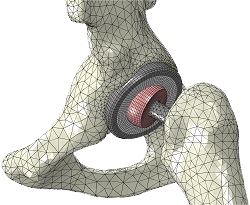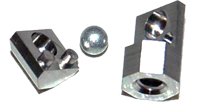Numerical simulation and implant technology
In the work group 'Numerical simulation and implant technology' of the Biomechanics and Implant Technology Research Lab, we conduct computational analyses into biomechanical problems.
We use methods of 'reverse engineering' for simulation of anatomical structures. Thereby, bones or other biological tissues are segmented and three-dimensionally reconstructed from e. g. CT-scans and reworked into CAD-models. These are usable for virtual implantation e.g. of endoprosthesis and CAD-simulations such as range of motion analysis. Moreover, these CAD-data are used for finite-element-analyses and multibody dynamics. The work group gained deep experience in numerical simulation of the implant-bone-compound. Starting at questions into implantation procedures, e.g. loads of a total knee component during impaction or deformation of a press-fit cup in the acetabular bone stock, up to problems concerning joint stability, joint loads and distribution of muscle forces, different models are established. Thereby, quality and validity of our numerical results are of highest importance.
Besides convergence and sensitivity studies, experimental validation is conducted. Characterization of material properties needed for numerical simulation is conducted in cooperation with the experimental biomechanics working group and external partners. The implant technology topics of our working group are application of segmental bone substitute, integration of sensors into endoprostheses as well as new measures of implant fixation.






